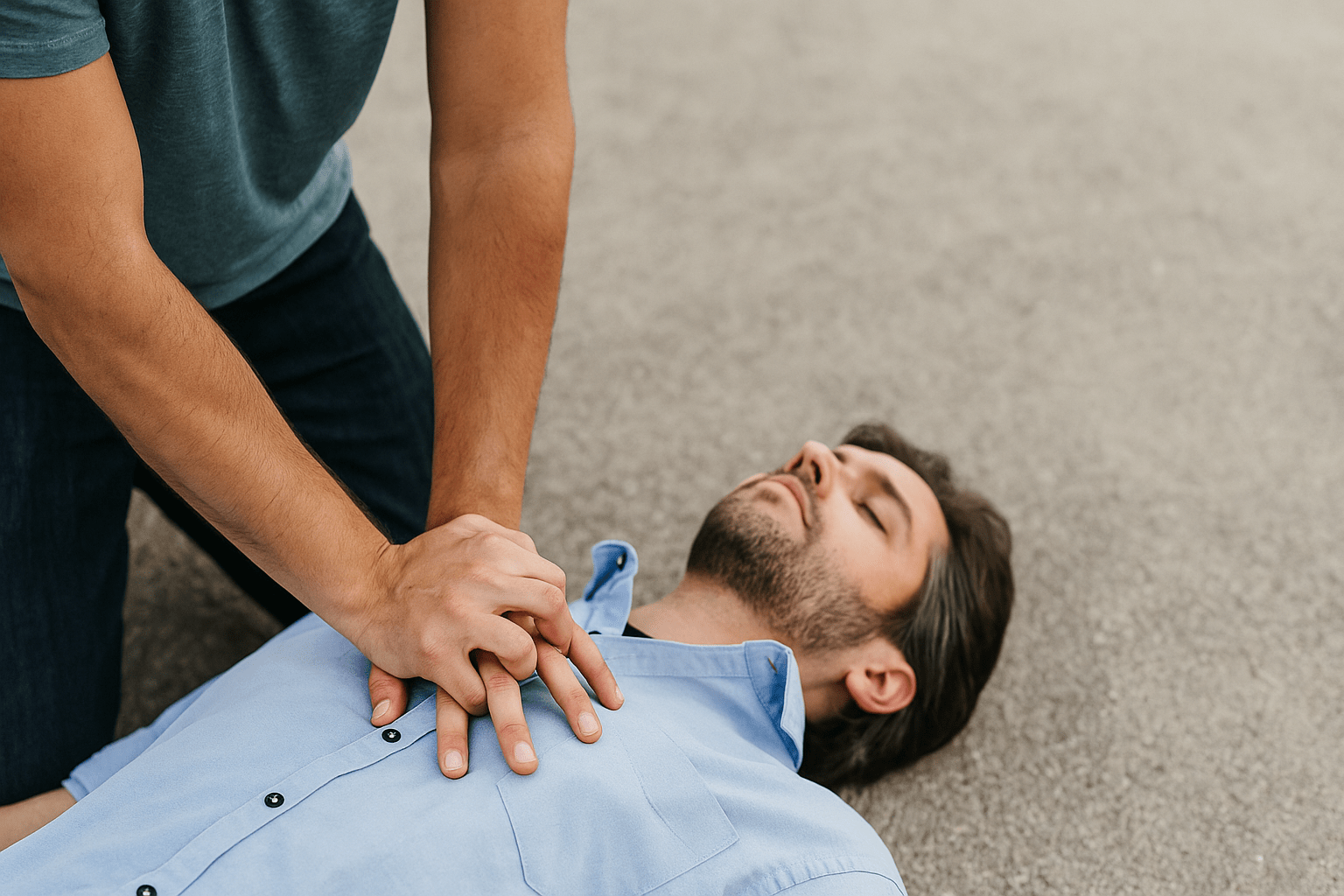Cardiac arrest occurs without warning and affects people in their homes of all ages including infants and workplace coworkers as well as strangers in parking spaces. Patients have twice to thrice higher survival odds when CPR is administered right after cardiac arrest. When emergencies occur bystanders often find themselves uncertain about their obligation to help and their right to step in.
One Love CPR annually trains thousands across New Jersey, New York, and Connecticut who continuously ask themselves the same fundamental question.
Multiple individuals question which person holds the responsibility to administer CPR during emergency situations.
This section aims to teach people their legal rights for performing CPR while clarifying who must respond in emergency situations.
1. The Chain of Survival Starts With You
When emergency medical personnel have not yet arrived at the scene of sudden cardiac arrest the best treatment remains prompt CPR. The American Heart Association’s “Chain of Survival” states that individuals who find someone unresponsive and not breathing must deliver CPR because they have both legal and moral obligations to help.
2. Lay Bystanders: Legally Protected Good Samaritans
Worried about liability? Good Samaritan laws exist in all U.S. states including NJ NY and CT which safeguard individuals who provide emergency assistance from civil liability provided they operate within their training boundaries. Key points:
- No certification required to start chest compressions. The American Heart Association instructs people without formal training to administer Hands-Only CPR.
- Follow dispatcher instructions. The emergency operators who answer 911 calls can instruct callers about chest compressions until the arrival of first responders.
- Use an AED if available. Automated External Defibrillators feature voice guidance which enables people with no prior experience to use them correctly.
Bottom line: Your arrival at the scene establishes a vital link between survival and expiration and demands immediate forceful compressions without delay.
3. Workplace Responders: Duty to Act
Job descriptions and regulatory standards formally document established response duties within professional roles. Examples include:
Setting Typical CPR Requirement
- Healthcare (hospitals, clinics) BLS or ACLS certification
- Schools & Daycare Centers Pediatric CPR & First Aid
- Fitness & Aquatic Facilities CPR/AED for professional rescuers
- Industrial/Construction Sites OSHA-compliant CPR/First Aid
- Law enforcement officers and security personnel receive training in CPR/BLS and education about Automatic External Defibrillators.
Workplace emergency protocols demand appropriate assistance because failing to follow them triggers both legal consequences and disciplinary actions. CPR certification status must remain current for professionals working in these fields.
4. Parents, Caregivers, and Community Volunteers
Family responsibility maintains its power without relying on any legal obligations. Anyone nearby must provide instant help to infants and children who experience choking or drowning emergencies. CPR and First Aid certifications serve as essential tools for scout leaders or church ushers who supervise groups.
5. The major challenge people confront when they attempt to execute emergency procedures arises from their fear of making mistakes.
- Fear of Harm: The benefits of brain protection through proper CPR compressions outweigh the risk of cracked ribs before medical professionals arrive.
- Fear of Disease: Hands-only CPR limits direct physical contact between rescuer and patient and pocket masks offer an economical way to administer rescue breaths safely while AED pads remove the need for mouth-to-mouth contact.
- Fear of Legal Action: Good Samaritan laws provide protection to individuals who offer emergency assistance with good intentions. Rarely do legal proceedings happen against people who offer emergency help.
Participants convert nervousness into confidence by learning to confront their fears directly through training.
6. Why Train With One Love CPR?
The American Heart Association-certified courses from One Love CPR educate professional emergency responders and general citizens on how to handle emergency situations. We offer:
- Hands-On Scenario-Based Learning enables participants to gain practical experience by engaging in real-life simulations rather than video demonstrations.
- Our training program combines face-to-face instruction with group training sessions in the workplace through adaptable learning methods.
- The full range of training teaches participants all essential skills needed to help adults children and infants.
- CPR training sessions are conducted by bilingual instructors in multiple communities spread across New Jersey, New York, and Connecticut.
- The Free Renewal Reminders service assists you in maintaining proper scheduling for your certification renewal dates.
7. Call to Action: Become the Lifesaver in the Room
Participants in CPR training experience satisfaction while often feeling they should have acquired the skills much earlier in their lives. Take charge of your readiness today.
- Visit: Upcoming CPR and emergency response class information is available at www.onelovecpr.com
- Enroll: Enroll today for your class to acquire essential life-saving skills.
Be the reason someone survives. The One Love CPR training prepares you to become an essential lifesaver because your emergency actions dictate survival results.
Who performs CPR? The law provides protection for individuals who provide assistance when someone suffers cardiac arrest.
Healthcare workers and professionals in childcare fitness and public safety roles must demonstrate proper emergency response skills while maintaining current certifications.
One Love CPR operates training courses across the tri-state area to help participants develop proficiency in their emergency response capabilities.
The structured heartbeat training program offered by One Love CPR teaches people how to save lives.



















